Test Age Calculator Understanding Age Calculators: Systems, Cultures, and Calculation Methods
An age calculator, such as test age calculator, is a tool designed to determine the age or time interval between two specific dates. This versatile instrument can be used to calculate how old a person is or the duration between any two events. By inputting a starting date and an end date, the age calculator provides a precise measurement of time elapsed, broken down into various units including years, months, weeks, days, hours, minutes, and seconds.
The primary function of an age calculator is to convert the difference between two dates into a comprehensible format. For example, if one were to input a birthdate and today’s date, the calculator would compute the individual’s age by accounting for the total number of years, months, weeks, days, and so on. This detailed breakdown allows users to understand not just the age in years but also the finer aspects of time elapsed.
The results are typically displayed in a hierarchical manner, starting with the largest units—years—and moving down to the smallest—seconds. This format ensures that users can easily interpret both the broad and specific aspects of the time span between the two dates. Whether for personal, educational, or professional purposes, the age calculator serves as a valuable tool for accurately assessing and representing time intervals.
Section 1: The Common Age Calculation System
Overview of the Most Common System
The most common system of age calculation is widely recognized and used globally, particularly in Western cultures. In this system, a person’s age increases by one year on their birthday each year. This straightforward approach begins counting age from the day of birth and adds one full year each subsequent year on the same date.
Age Increases on a Person’s Birthday
Under this age calculation system, age is counted from the moment of birth. For example, a baby born on January 1, 2020, is considered 1 year old on January 1, 2021, and 2 years old on January 1, 2022. This method ensures consistency and simplicity, as the age increment happens annually on the individual’s birthday.
Example: Age of a Person at 3 Years and 11 Months Becomes 4 on Their Next Birthday
To illustrate, consider a child who is 3 years and 11 months old. According to this system, the child will turn 4 years old on their next birthday. For instance, if the child was born on February 15, 2020, they would be 3 years and 11 months old on January 15, 2024. One month later, on February 15, 2024, the child will celebrate their 4th birthday and will henceforth be considered 4 years old.
Usage in Western Countries
The common age calculation system is prevalent in most Western countries. This includes the United States, Canada, the United Kingdom, Australia, and many European nations. The simplicity and clarity of this system make it the preferred method for official records, legal documents, and everyday use.
Description of Prevalence in Western Cultures
In Western cultures, the age calculation system is integrated into various aspects of life. It is the standard for registering births, enrolling in school, determining eligibility for voting and driving, and many other legal and social activities. The consistency of this system helps avoid confusion and ensures uniformity in age-related documentation and activities.
Example Scenarios and Applications in Daily Life
The application of this age calculation method is ubiquitous in daily life. Here are a few scenarios:
- Education: School enrollment often depends on the child’s age on a specific cutoff date. For instance, a child must be 5 years old by September 1 to start kindergarten in many U.S. states.
- Legal Age Milestones: Legal rights and responsibilities are frequently tied to age. For example, individuals can vote at 18, legally consume alcohol at 21 in the U.S., and qualify for senior citizen benefits at 65.
- Healthcare: Pediatric healthcare schedules, such as vaccinations and regular check-ups, are based on a child’s age in years and months, ensuring timely medical care.
- Social Interactions: Age is a common topic in social settings, from celebrating birthdays to planning events that cater to specific age groups, like youth sports leagues or senior activities.
The common age calculation system’s widespread use in Western countries underlines its importance in maintaining social order and facilitating clear communication regarding age. This method’s straightforward nature ensures that everyone, from individuals to institutions, can easily understand and apply it in various contexts.
Section 2: Cultural Variations in Age Calculation
Traditional Chinese Age System
The Traditional Chinese age system is a unique method of age calculation that differs significantly from the common Western system. In this system, individuals are considered to be one year old at birth. Unlike the Western system, where age increases on the individual’s birthday, the Traditional Chinese system increments age at the Chinese New Year.
Explanation of the System Where People Are Born at Age 1
According to the Traditional Chinese age system, a newborn is considered one year old at birth. This calculation includes the time spent in the womb, which is approximated to one year. Therefore, a baby born on any given day of the year starts their life at age one.
Age Increases at the Traditional Chinese New Year Rather than a Birthday
In this age system, age increments not on the individual’s birthdate but on the Chinese New Year, which varies each year according to the lunar calendar. This means that all individuals celebrate their aging milestone collectively at the start of the new lunar year. For example, if a baby is born just one day before the Chinese New Year, they will be considered two years old just two days after birth, as their age increases with the arrival of the new lunar year.
Example: A Baby Born Just Before the Traditional Chinese New Year Becoming 2 Days Later
To illustrate, if a baby is born on the day before the Traditional Chinese New Year, they would be considered one year old on the day of birth. The following day, as the Chinese New Year begins, the baby’s age would increase to two years old, despite being only two days old by the Western age calculation system. This system emphasizes the communal aspect of aging and the cultural significance of the lunar calendar.
Other Cultural Systems
Apart from the Traditional Chinese age system, various cultures around the world have their unique methods of calculating age. These systems reflect cultural values, historical contexts, and societal structures.
Overview of Age Calculation Methods in Different Cultures
Different cultures employ diverse methods to calculate age. Some may incorporate seasonal changes, historical events, or communal milestones as part of their age reckoning process. These methods often highlight the cultural significance of age and the roles individuals play within their societies.
Examples from Various Cultures and Their Unique Approaches
- Korean Age System: Similar to the Traditional Chinese system, Koreans consider a newborn to be one year old at birth. Additionally, everyone ages together on New Year’s Day, meaning that a person born in December would be two years old in Korean age just a few weeks after birth.
- Ethiopian Calendar: Ethiopia follows a different calendar system, which results in different age calculations. The Ethiopian calendar is roughly seven to eight years behind the Gregorian calendar used in the West. As a result, the age calculated in Ethiopia might be different when compared to the Western system.
- Vietnamese Age System: In Vietnam, the age calculation method is somewhat similar to the Chinese system, where a newborn starts at one year old. Age increases with the Lunar New Year, making it a collective celebration of aging.
- Thai Age System: Thailand traditionally uses the Buddhist calendar for age calculation, which is 543 years ahead of the Gregorian calendar. This means that age calculations might differ when referencing historical events or legal documents.
These examples showcase the rich diversity in how age is perceived and calculated across different cultures. Each system carries with it the historical and cultural contexts that shape the lives of individuals within those societies. Understanding these variations highlights the importance of cultural perspectives in something as fundamental as calculating age.
Section 3: Calculating Age: Practical Challenges
Month-End Calculation Confusion
Calculating age or the interval between two dates can present challenges, especially when the starting dates are at the end of a month. This confusion arises due to the uneven number of days in different months and varying month lengths, particularly when February is involved because of leap years.
Explanation of Potential Confusion When Starting Dates Are at the End of a Month
The primary challenge occurs when calculating the age from one month to the next. For example, moving from February to March involves transitioning from a month with 28 or 29 days to a month with 31 days. This discrepancy can lead to different interpretations of what constitutes a “full month.” As a result, the number of days, weeks, and even months counted may differ depending on the chosen method of calculation.
Examples: Feb. 20 to Mar. 20 Versus Feb. 28 to Mar. 31
Consider the period from February 20 to March 20. Here, it is straightforward to count this as one month. However, complications arise when the start date is at the end of the month, such as February 28 (or 29 in a leap year) to March 31. There are two possible methods to calculate the interval in such cases:
- Counting February 28 to March 28 as one month and the remaining days as additional days.
- Considering both February 28 and March 31 as end-of-month dates, thus counting this period as one full month.
Both methods can yield different results, making it crucial to understand the nuances and contexts of each calculation method.
Methods of Handling Uneven Days in Months
To address these challenges, two primary methods are commonly used to handle the uneven number of days in months during age calculation.
Method 1: Counting Full Months and Additional Days
This method involves calculating the age by counting the number of full months first, then adding the remaining days. For instance, from February 28 to March 31, the period would be counted as one month and three days. This approach breaks down the calculation into clear, understandable segments:
- February 28 to March 28: One full month.
- March 29 to March 31: Three additional days.
Method 2: Considering End-of-Month Dates as Full Months
An alternative method is to consider both the start and end dates of a month as full months, even if the number of days in these months differs. In this approach, the period from February 28 to March 31 is counted as one full month, despite the discrepancy in the number of days. This method simplifies the calculation by standardizing the month-end dates, making it easier to remember and apply:
- February 28 to March 31: One full month.
Rationale Behind Choosing One Method Over the Other
The choice between these methods often depends on the context and purpose of the age calculation. Method 1, which counts full months and additional days, is more precise and is typically used in contexts requiring exact durations, such as legal documents or detailed age verification processes. It provides a granular breakdown of time intervals, ensuring clarity and accuracy.
On the other hand, Method 2 is often preferred for its simplicity and ease of use, particularly in everyday applications or when a rough estimate is sufficient. By standardizing month-end dates, it reduces the potential for confusion and simplifies the age calculation process, making it user-friendly and straightforward.
In conclusion, both methods of handling uneven days in months have their advantages and are chosen based on the specific needs of the calculation. Understanding the potential confusion and knowing how to apply these methods correctly can help ensure accurate and consistent age calculations in various scenarios.
Section 4: Implementation of Age Calculators
Technical Aspects
The implementation of age calculators involves a combination of robust programming techniques and precise algorithms to handle various scenarios. The primary goal is to ensure accurate age calculations regardless of the complexity of the input dates.
How Age Calculators Are Programmed to Handle Different Scenarios
Age calculators must be programmed to accommodate a wide range of date-related scenarios. This includes handling leap years, varying month lengths, and different cultural age systems. Programmers typically use programming languages such as Python, JavaScript, or PHP to create these tools. The process involves:
- Date Validation: Ensuring that the input dates are valid and correctly formatted.
- Leap Year Handling: Recognizing and accounting for leap years, which have 29 days in February instead of the usual 28.
- Month Length Variation: Adjusting calculations based on the differing number of days in each month.
- Time Zone Considerations: Addressing potential time zone differences that might affect date and time calculations.
- Error Handling: Managing incorrect inputs and providing appropriate error messages to guide users.
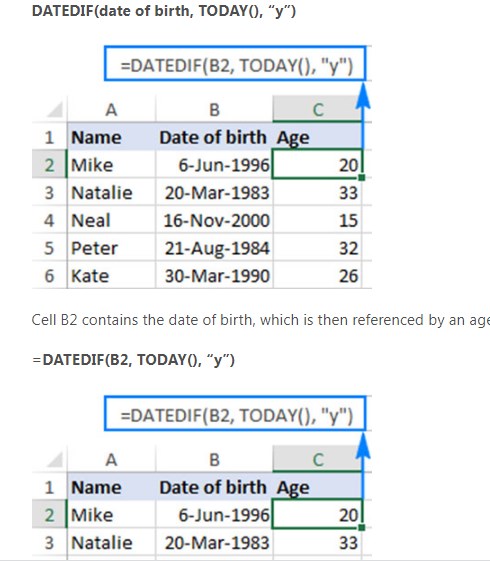
Algorithms Used in Age Calculations
The core of an age calculator is its algorithm, which performs the actual computation of age. Here are the steps typically involved in these algorithms:
- Date Difference Calculation: Using built-in date functions to calculate the difference between two dates.
- Year, Month, and Day Extraction: Breaking down the date difference into years, months, and days.
- Incremental Adjustment: Adjusting the initial calculations to account for incomplete months and days.
- Edge Case Handling: Ensuring that special cases, such as end-of-month calculations and leap year adjustments, are accurately managed.
A common algorithm might look like this in pseudocode:
java
function calculateAge(startDate, endDate):
if endDate < startDate:
return "Invalid date range"months = endDate.month – startDate.month
days = endDate.day – startDate.day
months -= 1
days += daysInMonth(endDate.month – 1)
years -= 1
months += 12
User Interface and Experience
A user-friendly interface is crucial for the effective use of age calculators. The design should be intuitive, visually appealing, and accessible across various devices.
Designing User-Friendly Interfaces for Age Calculators
The design of an age calculator should prioritize simplicity and ease of use. Key considerations include:
- Clear Input Fields: Date input fields should be prominently displayed and clearly labeled.
- Responsive Design: The calculator should be usable on both desktop and mobile devices.
- Immediate Feedback: Users should receive instant feedback on their inputs, including error messages for invalid dates.
- Accessibility: The interface should be accessible to users with disabilities, adhering to web accessibility standards (e.g., WCAG).
Example of a Good Age Calculator Design and Features
A well-designed age calculator might feature the following:
- Date Pickers: Interactive date pickers that allow users to easily select start and end dates without manually typing them.
- Real-Time Calculation: Instant calculation of the age as soon as the user inputs the dates, providing immediate results.
- Detailed Breakdown: Displaying the age in years, months, days, hours, minutes, and seconds, giving users a comprehensive view.
- Customization Options: Allowing users to switch between different age systems (e.g., Western, Traditional Chinese) to see how age varies in different cultures.
- User Guidance: Tooltips and instructions to help users understand how to use the calculator and interpret the results.
For example, an effective age calculator interface might have a clean layout with two date input fields, a “Calculate” button, and a results section that dynamically updates. The results section could include tabs or dropdowns for switching between different calculation methods and cultural age systems.
In summary, the implementation of age calculators involves a blend of technical precision and thoughtful design. By leveraging robust algorithms and creating user-friendly interfaces, developers can provide a valuable tool that accurately calculates age and is accessible to a wide range of users.
Section 5: Age Calculators in Various Applications
Personal Use
Age calculators are widely utilized in personal contexts to manage and celebrate significant life events. Here are some examples of their applications:
- Birthdays: People often use age calculators to determine their exact age down to the day, hour, and second, making milestone birthdays even more special. For example, calculating the precise age on a child’s 18th birthday can be a delightful surprise.
- Anniversaries: Couples use age calculators to mark their relationship milestones, such as wedding anniversaries. Knowing the exact number of years, months, days, and even seconds they have been together can add a sentimental touch to anniversary celebrations.
- Life Planning: Individuals use age calculators to track important life events and plan for the future. For instance, calculating the time until retirement, the duration of a fitness regime, or the time elapsed since a major life event.
By providing detailed time metrics, age calculators help people appreciate the passage of time and celebrate their personal achievements more meaningfully.
Legal and Administrative Use
In legal and administrative contexts, age calculators play a crucial role in ensuring accuracy and compliance with regulations. Here are some examples of their applications: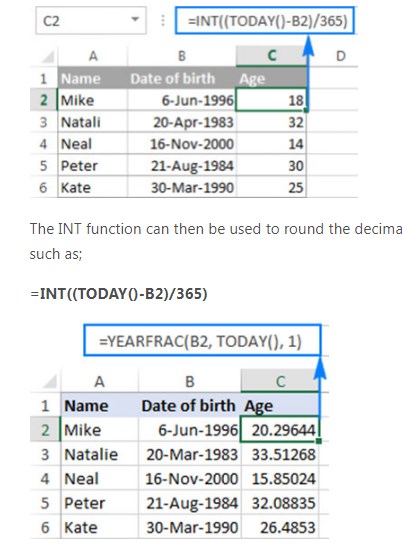
- Legal Documents: Age calculators are used to verify the ages of individuals in various legal documents. For instance, in contracts where age-specific clauses are present, accurately determining a person’s age ensures that the legal terms are properly applied.
- Application Processes: Many administrative processes require precise age calculations. For example, determining eligibility for social security benefits, pension plans, or age-restricted services often relies on accurate age data.
- Record Keeping: Government and institutional records use age calculators to maintain accurate data. For instance, in educational institutions, age calculators help verify students’ ages for enrollment and grade placement, ensuring that records are kept up-to-date and accurate.
Accurate age calculations in legal and administrative settings help prevent errors and ensure that age-related regulations and benefits are appropriately managed.
Educational and Research Use
In academic and scientific research, age calculators are essential tools for analyzing data and conducting studies that involve time-related variables. Here are some examples of their applications:
- Academic Research: Researchers often need to calculate ages precisely to analyze demographic data, study population trends, or investigate age-related phenomena. For example, in longitudinal studies, accurately tracking the ages of participants over time is crucial for reliable results.
- Scientific Studies: In fields such as biology, psychology, and medicine, age calculators help researchers determine the exact ages of subjects, which is vital for experiments and clinical trials. For instance, in developmental studies, researchers need to accurately assess the ages of children to understand growth patterns and developmental milestones.
- Educational Planning: Educators and administrators use age calculators to plan curricula and educational programs tailored to specific age groups. For example, determining the average age of students in a particular grade can help in designing age-appropriate learning materials and activities.
In educational and research contexts, the precise calculation of age is critical for the integrity and accuracy of studies and programs.
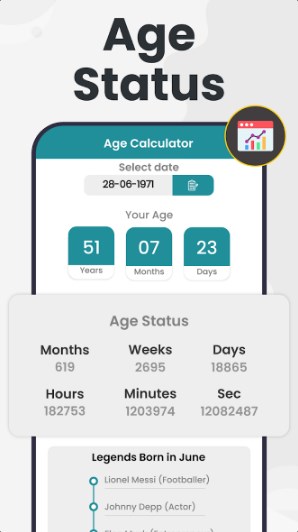
In summary, age calculators have diverse applications across personal, legal, administrative, and educational fields. Whether it’s for celebrating personal milestones, ensuring legal compliance, maintaining accurate records, or conducting scientific research, age calculators provide a reliable and essential tool for determining and understanding the passage of time. By offering detailed and precise age metrics, these calculators facilitate a wide range of activities and processes that depend on accurate age information.
Section 6: Future Developments in Age Calculation Technology
Innovations in Age Calculation Tools
The field of age calculation technology is continually evolving, with emerging technologies and trends poised to enhance the accuracy and functionality of age calculators. As digital tools become more sophisticated, several key innovations are shaping the future of age calculation:
- Artificial Intelligence (AI) and Machine Learning (ML): AI and ML algorithms are being integrated into age calculators to improve their precision and adaptability. These technologies can learn from vast datasets to refine calculation methods, handle complex scenarios, and provide more accurate results. For example, AI can predict potential errors in date inputs and automatically correct them.
- Blockchain Technology: The use of blockchain for secure and immutable record-keeping is gaining traction. Age calculators can leverage blockchain to ensure the accuracy and integrity of age-related data, particularly in legal and administrative contexts. This ensures that the calculated age is tamper-proof and verifiable.
- Internet of Things (IoT) Integration: IoT devices, such as smartwatches and fitness trackers, can continuously monitor and record user data. Integrating these devices with age calculators allows for real-time age tracking and health monitoring, providing users with up-to-date information on their biological age based on various health metrics.
- Enhanced User Interfaces: Advances in user interface design, including voice recognition and natural language processing, are making age calculators more accessible. Users can interact with age calculators using voice commands, making the tools easier to use for individuals with disabilities or those unfamiliar with digital interfaces.
Potential Improvements
To further enhance the accuracy and user experience of age calculators, several potential improvements can be made:
- Dynamic Adjustment Algorithms: Developing more sophisticated algorithms that can dynamically adjust calculations based on a variety of factors, such as cultural differences, time zones, and leap years, can improve accuracy. These algorithms can account for nuances in date differences and provide more precise results.
- Customization Options: Allowing users to customize the age calculation process based on their specific needs can enhance the user experience. For example, users could choose between different cultural age systems, adjust for time zone differences, or include/exclude leap years in their calculations.
- User Education and Guidance: Providing users with clear instructions and educational resources on how to use age calculators can improve their overall experience. Interactive tutorials, FAQs, and example scenarios can help users understand the tool’s functionality and avoid common errors.
- Integration with Other Tools: Age calculators can be integrated with other digital tools and platforms to provide a more seamless user experience. For example, integrating age calculators with calendar apps, health monitoring systems, and legal document management software can streamline various processes that rely on accurate age calculations.
- Mobile App Development: Developing dedicated mobile applications for age calculators can enhance accessibility and convenience. These apps can offer offline functionality, push notifications for important dates, and personalized features based on user preferences and data.
- Real-Time Updates and Notifications: Implementing real-time updates and notifications can keep users informed about important age milestones. For example, notifications for upcoming birthdays, anniversaries, or legal age thresholds can help users stay on top of significant dates.
In summary, the future of age calculation technology holds exciting possibilities with the integration of advanced technologies and user-centric improvements. By leveraging AI, blockchain, IoT, and enhanced user interfaces, age calculators can become more accurate, secure, and user-friendly. Additionally, implementing dynamic adjustment algorithms, customization options, user education, tool integration, mobile app development, and real-time updates can further enhance the accuracy and overall user experience of age calculators. These advancements will ensure that age calculators remain valuable tools for personal, legal, administrative, and educational applications in the years to come.
Throughout this discussion, we have delved into the intricacies of age calculation systems, highlighting both the common Western approach and various cultural methods. The common age calculation system, where age increments annually on a person’s birthday, is straightforward and widely used in Western countries. In contrast, cultural variations, such as the Traditional Chinese age system where individuals are considered one year old at birth and their age increases at the Chinese New Year, showcase the diversity in how age is perceived and calculated around the world.
Understanding these different methods is crucial, as they reflect cultural values and historical contexts, and can affect legal, educational, and personal records. Practical challenges, such as month-end calculations, require precise algorithms and thoughtful programming to ensure accurate age determinations. Moreover, innovations in age calculation technology, such as AI, blockchain, and IoT integration, promise to enhance the accuracy and user experience of these tools.
Accurate age calculation plays a significant role in various contexts, from personal milestones like birthdays and anniversaries to critical applications in legal documents, administrative processes, and scientific research. Tools like test age calculator ensure compliance with regulations, maintain accurate records, and support academic studies by providing reliable age data.
As technology advances, the potential for more sophisticated and user-friendly age calculators grows, offering improved accuracy and functionality. Understanding and applying different age calculation methods can enrich our appreciation of cultural diversity and enhance the precision of age-related tasks. Whether for personal use, legal compliance, or educational research, accurate age calculation remains a vital tool in navigating the complexities of time and age in our lives.
Age -Saber Toothed Tiger Ice Age NYT Deciphering ‘A Star is Born’: An In-Depth Analysis of a Thematic Crossword Puzzle
Norissa Valdez Age An In-Depth Look at the Life, Career, and Achievements of a Social Media Sensation
Mya Allen Volleyball Age Rising Star in High School Volleyball and TCU’s Latest Recruit
Lori Matsuoka’s Age The Unwavering Pillar Behind Bill Walton’s Legacy
Legal Drinking Age in Punta Cana, Dominican Republic A Comprehensive Guide
Jiu-Jitsu Start at What Age and Why? A Comprehensive Guide
Jack Hibbs age of A Survivor’s Story of Redemption and Advocacy for Life
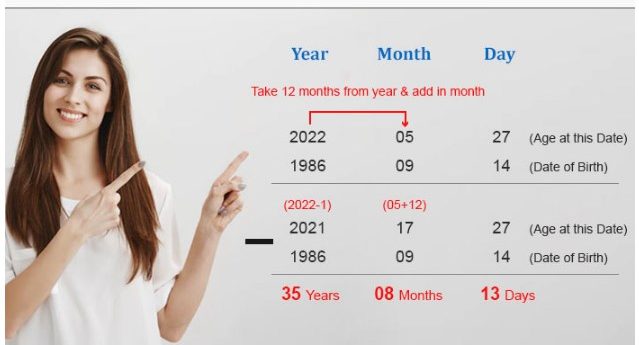
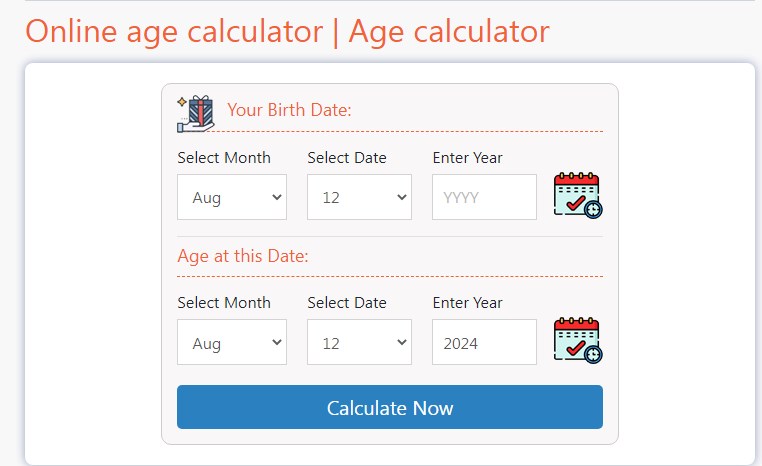
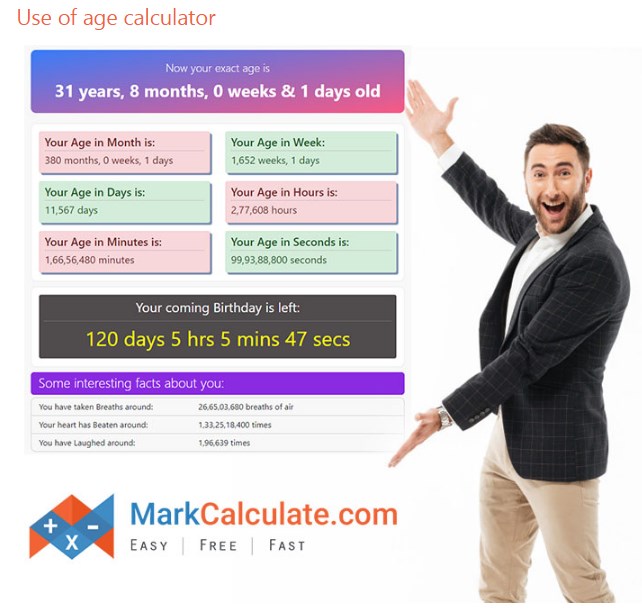
 | Sitemap | Mail
| Sitemap | Mail